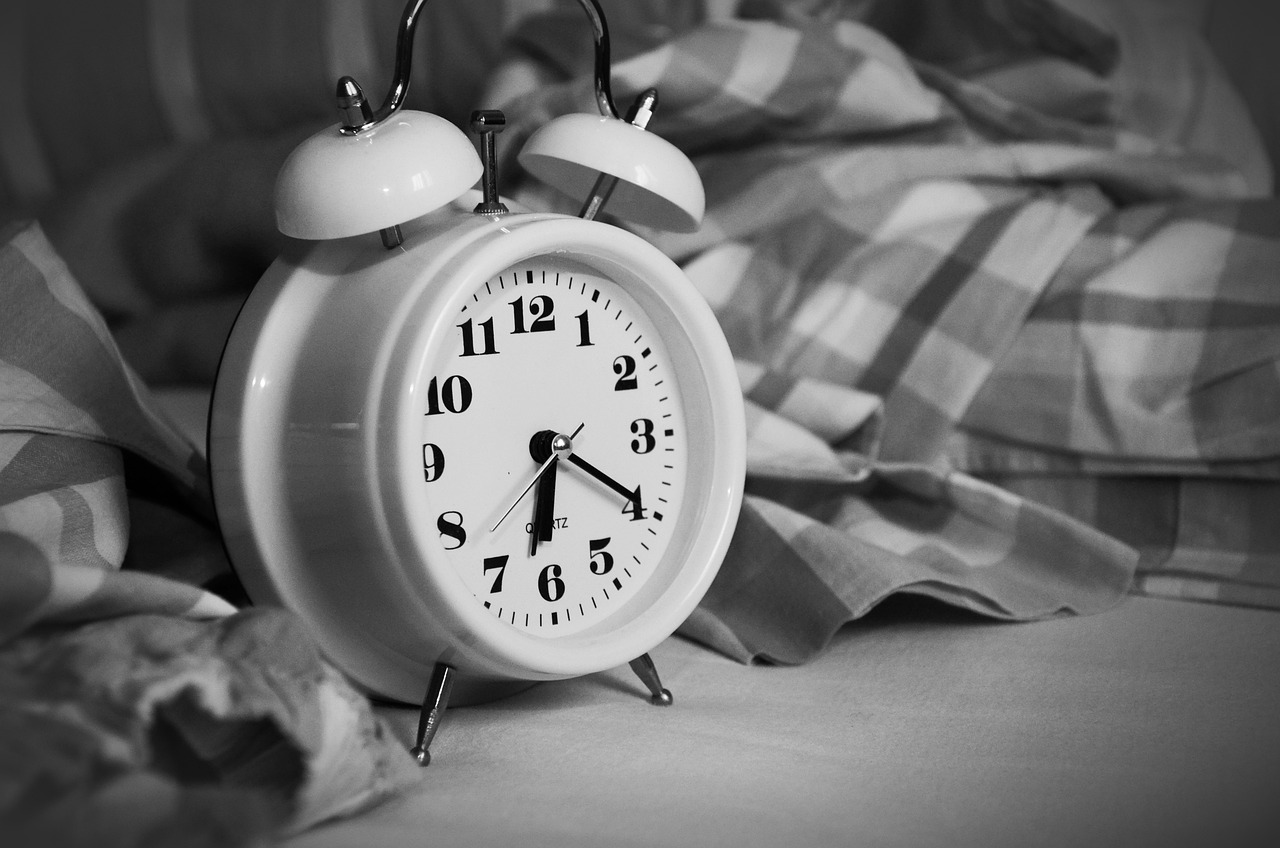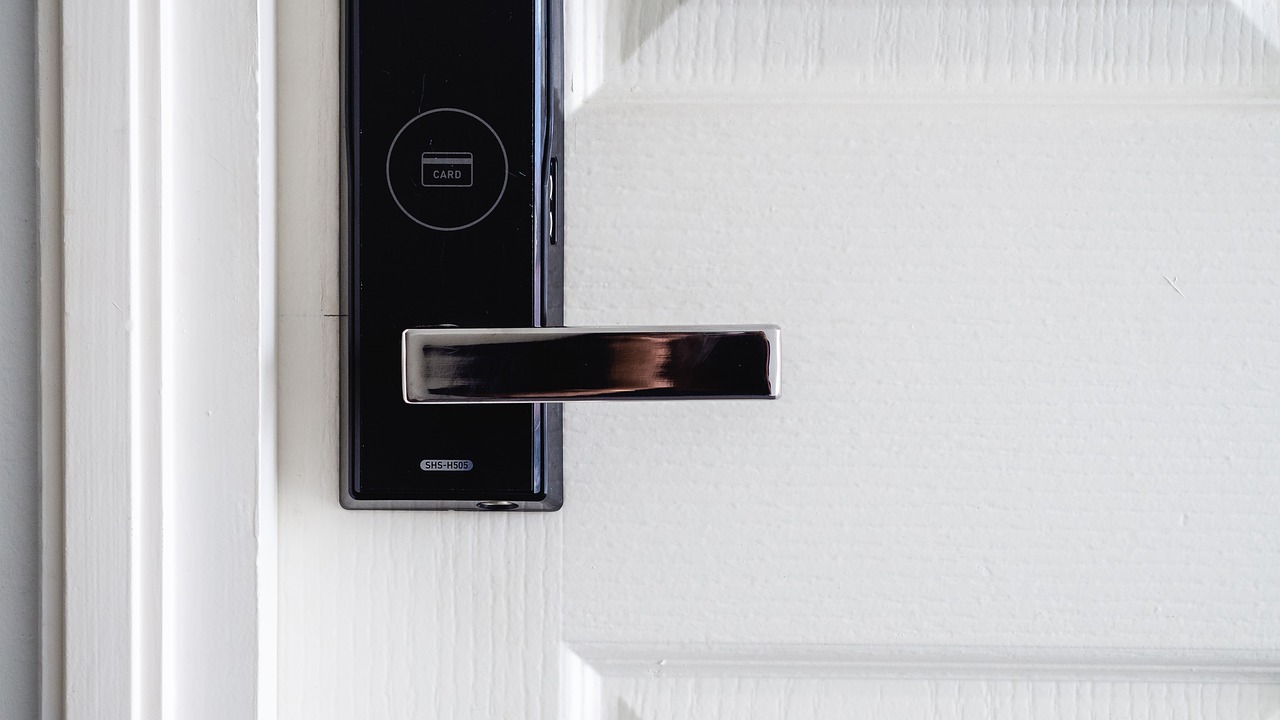The Truth Behind Common Home Safety Myths
Welcome to the world of home safety, where misconceptions can lead to dangerous situations. In this article, we will explore some of the most prevalent myths surrounding home safety. It's surprising how many people fall prey to these misconceptions, often believing that they are safe simply because they think they know better. By debunking these myths, we aim to provide factual information that will help homeowners create a secure living environment for themselves and their families. So, let’s dive in and uncover the truth behind these common home safety myths!
One of the most dangerous myths is the belief that smoke alarms are optional, especially for those with a keen sense of smell. This misconception can lead to fatal consequences, as smoke alarms are crucial for early fire detection. Imagine being asleep at night, unaware of a fire slowly spreading through your home. Without a smoke alarm, you might not wake up in time to escape. According to the National Fire Protection Association (NFPA), having a working smoke alarm can reduce the risk of dying in a reported fire by about 50%. That’s a statistic worth paying attention to!
Many homeowners shy away from investing in security systems due to the belief that they are prohibitively expensive. However, this myth couldn't be further from the truth. There are various affordable options available that can significantly enhance home security without breaking the bank. In fact, investing in a security system can save you money in the long run, especially when you consider the potential loss from theft or damage. Let's explore some budget-friendly options!
DIY security measures can be both budget-friendly and effective. Homeowners can implement simple strategies to improve security without the need for professional installation or high costs. For instance, installing motion-sensor lights around your property can deter intruders. Additionally, securing windows and doors with high-quality locks is a straightforward way to enhance your home’s safety.
Smart home devices, like cameras and alarms, can be integrated into a home’s existing system. They offer convenience and peace of mind, often at a lower price than traditional security systems. Imagine being able to monitor your home in real-time from your smartphone! This level of control is not just a luxury; it’s a smart investment in your safety.
Participating in or establishing a neighborhood watch program can enhance community vigilance. This collaborative effort can deter crime and promote a safer environment without significant financial investment. When neighbors look out for one another, it creates a sense of community that can be a powerful deterrent against crime.
Many insurance companies offer discounts for homes equipped with security systems. Homeowners can save money on premiums while simultaneously increasing their safety, making security systems a worthwhile investment. So, not only do you get peace of mind, but you also save money! It’s a win-win situation.
Contrary to popular belief, burglaries can occur at any time of day. Understanding this can help homeowners take proactive measures to secure their properties throughout the day and night. Many people assume that their home is safe during the day when they are at work or school, but statistics show otherwise. In fact, many burglaries happen during daylight hours when homeowners are away, making it crucial to remain vigilant at all times.
Statistics show that many burglaries happen during daylight hours when homeowners are at work or school. Awareness of this trend can help individuals better prepare their homes against potential break-ins. If you think about it, a burglar is much more likely to target an empty house than one with people inside. This means that securing your home during the day is just as important as at night.
Maintaining visibility around the home can deter burglars. Simple landscaping choices and outdoor lighting can make a significant difference in discouraging criminal activity, regardless of the time of day. Keeping bushes trimmed and ensuring that entry points are well-lit can make your home less appealing to potential intruders.
Many people assume that any fire extinguisher will suffice in an emergency. Understanding the different types and their specific uses is essential for effective fire safety management in the home. Just like you wouldn’t use a hammer to screw in a nail, you shouldn’t use just any fire extinguisher for every type of fire.
There are various types of fire extinguishers, each designed for specific classes of fires. Knowing which extinguisher to use in different situations can save lives and property. For example, a Class A extinguisher is effective for ordinary combustibles like wood and paper, while a Class B extinguisher is intended for flammable liquids like gasoline. Understanding these differences is crucial for effective fire safety.
Regular maintenance and inspection of fire extinguishers are crucial. Homeowners should check expiration dates and ensure that extinguishers are easily accessible and in working order for emergencies. It’s a simple task that can make a life-saving difference when seconds count in a fire emergency.
- How often should I test my smoke alarms? It’s recommended to test your smoke alarms monthly and replace the batteries at least once a year.
- Are DIY security systems effective? Yes, many DIY security solutions can be very effective when combined with good practices like locking doors and windows.
- What type of fire extinguisher should I have at home? It’s advisable to have a multi-purpose extinguisher (Class ABC) for general use in the home.

Myth 1: Smoke Alarms Are Optional
Many homeowners mistakenly believe that smoke alarms are optional if they have a good sense of smell. This myth is not only dangerous but can also lead to fatal consequences. In reality, smoke alarms are crucial for early fire detection, giving you and your family the precious seconds needed to escape a potentially life-threatening situation. Imagine being in your home, asleep, when a fire breaks out. The smell of smoke may not wake you up in time, but a smoke alarm will sound its piercing alert, ensuring you have the chance to get out safely.
According to the National Fire Protection Association (NFPA), working smoke alarms can reduce the risk of dying in a reported fire by 50%. This statistic alone should be enough to convince any skeptic of their importance. But let’s break it down further: smoke alarms are not just a recommendation; they are a necessity for every home. Here are some critical points about smoke alarms:
- Placement Matters: Smoke alarms should be installed on every level of your home, inside each bedroom, and outside sleeping areas.
- Regular Maintenance: Test your smoke alarms monthly and replace the batteries at least once a year. Remember, a smoke alarm is only effective if it works!
- Replacement Timeline: Smoke alarms should be replaced every 10 years to ensure they function correctly.
It’s easy to overlook these devices, but they serve as your first line of defense against fire hazards. Think of them as your home's silent guardian, always on watch, ready to alert you at the first sign of danger. In a world where we often rely on our senses, trusting a smoke alarm is a smart choice that can save lives.
Furthermore, consider the emotional and financial impact of a house fire. The loss of your home and belongings can be devastating, but the most heartbreaking aspect is the potential loss of life. Investing in smoke alarms is a small price to pay for the peace of mind they provide. Don’t let the myth that smoke alarms are optional put your family at risk. Instead, take action today to ensure your home is equipped with functioning smoke alarms.

Myth 2: Security Systems Are Too Expensive
Many homeowners are under the impression that installing a security system is a luxury they simply can't afford. This myth can be quite misleading. In reality, there are a plethora of options available that cater to various budgets, making home security accessible to everyone. Think of it like shopping for a car; you can find everything from high-end models to budget-friendly options that still get you where you need to go. Similarly, security systems come in a range of prices, and it’s important to recognize that investing in safety doesn’t have to break the bank.
When considering the cost of a security system, it’s essential to weigh the potential losses from a burglary against the investment in security measures. According to recent statistics, the average financial loss from a burglary can exceed $2,000, not to mention the emotional toll it can take on a family. Therefore, investing in a security system can be a wise decision that pays off in the long run.
Furthermore, many modern security solutions are designed to be affordable and user-friendly. For instance, you can opt for DIY security measures that allow you to set up your own system without the need for professional installation. This not only saves you money but also gives you the flexibility to customize your security according to your specific needs. Here are some budget-friendly options:
- Smart Home Devices: Devices like smart cameras and alarms can be easily integrated into your home’s existing setup. They often provide more features at a lower cost than traditional systems.
- Wireless Systems: Wireless security systems eliminate the need for expensive wiring and installation, making them a more economical choice.
- Subscription Services: Many companies offer subscription models that allow you to pay a monthly fee for monitoring services, which can be more manageable than a large upfront cost.
Additionally, many homeowners are unaware that insurance companies frequently offer discounts for homes equipped with security systems. This means that not only are you enhancing your safety, but you could also save on your insurance premiums. It’s a win-win situation!
In conclusion, the notion that security systems are too expensive is a misconception that can prevent homeowners from taking necessary precautions. With a variety of affordable options available, there's no reason to compromise on safety. Remember, investing in a security system is not just about protecting your belongings; it's about ensuring peace of mind for you and your loved ones.
Q: Are there any hidden costs with DIY security systems?
A: While DIY systems generally have lower upfront costs, it’s essential to read the fine print regarding subscription fees or additional equipment that may be required.
Q: How can I determine which security system is right for me?
A: Assess your home’s vulnerabilities, consider your budget, and research different systems to find one that fits your specific needs.
Q: Will having a security system really deter burglars?
A: Yes! Statistics show that homes with security systems are less likely to be targeted by burglars, as the risk of getting caught is much higher.

Subheading 2.1: DIY Security Solutions
When it comes to enhancing your home security, DIY solutions can be a game changer. Many homeowners feel overwhelmed by the thought of investing in expensive security systems, but the truth is, you can take matters into your own hands without draining your wallet. Imagine transforming your home into a fortress with just a few simple, cost-effective strategies!
One of the first steps in your DIY security journey is to assess your home’s vulnerabilities. Think of your property as a puzzle; each piece represents an area that can be fortified. Here are a few effective strategies you might consider:
- Reinforce Entry Points: Ensure that all doors and windows are secure. Use deadbolts on doors and consider adding window locks. A simple upgrade can make a significant difference in deterring potential intruders.
- Outdoor Lighting: Install motion-activated lights around your property. These lights not only illuminate dark areas but also startle anyone who might be lurking around.
- Landscaping for Security: Keep shrubs and trees trimmed to eliminate hiding spots for burglars. A well-maintained yard not only looks good but also enhances safety.
Another exciting avenue to explore is the world of smart home devices. These gadgets can seamlessly integrate into your existing home setup, providing both convenience and security. For example, smart cameras allow you to monitor your property remotely, and smart doorbells give you the ability to see who is at your door from anywhere. The best part? Many of these devices are surprisingly affordable and user-friendly.
Additionally, you might want to consider joining or starting a neighborhood watch program. This community-driven initiative can significantly enhance the security of your area. By working together, neighbors can keep an eye out for suspicious activities and share information about potential threats. It’s like having a built-in security team, and it fosters a sense of camaraderie among residents.
Incorporating these DIY security solutions not only protects your home but also empowers you as a homeowner. You don’t need to rely solely on professionals to keep your family safe; with a little creativity and effort, you can create a secure environment that suits your needs. So, why wait? Start implementing these strategies today and take the first step towards a safer home!

Subheading 2.1.1: Smart Home Devices
In today's world, smart home devices are becoming essential tools for enhancing home security. These innovative gadgets not only provide safety but also offer convenience and peace of mind. Imagine being able to monitor your home from anywhere in the world, all from your smartphone! That's the magic of smart home technology.
Smart home devices come in various forms, including security cameras, smart locks, motion detectors, and alarm systems. Each of these devices plays a crucial role in creating a comprehensive security system. For instance, security cameras allow homeowners to keep an eye on their property in real-time, receiving alerts when suspicious activity is detected. This can be particularly reassuring when you're away on vacation or at work.
Moreover, smart locks eliminate the need for traditional keys. You can lock and unlock your doors remotely, grant access to guests, or even set up temporary codes for service personnel. This level of control not only enhances security but also adds a layer of convenience to your daily routine.
Another significant advantage of smart home devices is their integration capabilities. Many of these devices can be connected to a central hub or smartphone app, allowing you to manage your entire security system from one place. This interconnectivity means that if a camera detects motion, it can trigger an alarm or send alerts to your phone, ensuring that you're always in the loop.
To give you a clearer picture, here’s a quick comparison of some popular smart home devices:
| Device Type | Key Features | Benefits |
|---|---|---|
| Security Cameras | HD video, night vision, motion detection | Real-time monitoring, deterrent for burglars |
| Smart Locks | Keyless entry, remote access, temporary codes | Enhanced convenience, improved security |
| Motion Detectors | Instant alerts, integration with alarms | Immediate response to potential threats |
| Smart Alarms | Remote notifications, integration with other devices | Peace of mind, proactive security measures |
It's important to choose devices that fit your specific needs and budget. Fortunately, there are options available for every homeowner. Whether you opt for a high-end security camera or a simple motion sensor, the key is to create a system that works for you.
In conclusion, investing in smart home devices is not just about keeping your property safe; it's about creating a lifestyle that prioritizes security and convenience. With the ability to monitor your home in real-time and control various aspects of your security system from your phone, you can truly enjoy peace of mind knowing that your home is protected, even when you're not there.

Subheading 2.1.2: Neighborhood Watch Programs
When it comes to enhancing home security, neighborhood watch programs are a fantastic way to foster community spirit while keeping an eye out for each other. You might be wondering, "How can a group of neighbors really make a difference?" Well, think of it like a neighborhood safety net—when everyone is looking out for each other, it’s harder for criminals to slip through unnoticed.
Participating in or establishing a neighborhood watch program not only helps deter crime but also promotes a sense of belonging and community engagement. Imagine walking down your street and knowing that your neighbors are on the lookout for suspicious activity. It’s like having a built-in security system that doesn’t cost a dime! The best part? You can get started with just a few neighbors and gradually expand as more people see the benefits.
Here are some key elements that make neighborhood watch programs effective:
- Communication: Regular meetings and updates help keep everyone informed about local crime trends and safety tips.
- Vigilance: Neighbors look out for each other, reporting any suspicious activity to local law enforcement.
- Community Events: Hosting events can strengthen bonds and encourage more residents to participate in safety initiatives.
In addition to crime prevention, these programs often lead to improved relationships among neighbors. You might find yourself chatting with someone you’ve never met before or sharing a laugh over a barbecue while discussing safety tips. It’s not just about security; it’s about building a community where everyone feels safe and connected.
So, if you’re interested in starting a neighborhood watch program, consider reaching out to your local police department for resources and support. They can provide valuable information on how to set up a program, conduct training sessions, and even assist with promotional materials. Remember, safety doesn’t have to be a solo endeavor—it’s a team effort!
Q: How do I start a neighborhood watch program?
A: Begin by gathering interested neighbors and contacting your local police department for guidance and resources.
Q: Are neighborhood watch programs effective?
A: Yes, studies have shown that neighborhood watch programs can significantly reduce crime rates in communities.
Q: Do I have to participate in meetings?
A: While attending meetings is encouraged for staying informed, participation levels can vary based on individual schedules.
Q: What if I see suspicious activity?
A: Report it to your local authorities immediately, and avoid confronting anyone directly.

Subheading 2.2: Insurance Discounts
When considering the financial aspects of home security, one of the most overlooked benefits is the potential for insurance discounts. Many homeowners are unaware that installing a security system can lead to significant savings on their home insurance premiums. Insurance companies often reward policyholders who take proactive measures to protect their homes, viewing them as lower-risk clients. This means that investing in a security system not only enhances your safety but can also lighten the financial load.
For instance, many insurers provide discounts ranging from 5% to 20% for homes equipped with monitored security systems. This can translate to substantial savings over time, especially considering the rising costs of home insurance. To give you a clearer picture, let’s look at a hypothetical scenario:
| Annual Premium Without Security | Annual Premium With Security | Potential Savings |
|---|---|---|
| $1,200 | $1,000 | $200 |
In this example, by investing in a security system, the homeowner saves $200 each year on their insurance premium. Over a span of five years, that amounts to $1,000 in savings, which could be used for other home improvements or even a vacation!
Moreover, it’s not just the installation of a security system that can lead to discounts. Other safety measures, such as smoke detectors, deadbolt locks, and even having a sprinkler system, can also qualify you for lower rates. It’s essential to communicate with your insurance provider to understand what specific measures can earn you these discounts. Remember, every little bit helps, and being proactive about home safety can lead to a win-win situation.
In conclusion, while the initial investment in a security system might seem daunting, the long-term financial benefits, including insurance discounts, can make it a worthwhile endeavor. So, why not take that step towards a safer home and a more secure financial future?
- Do all insurance companies offer discounts for security systems? - While many do, it's best to check with your specific insurer for their policies.
- How much can I save with a security system? - Savings can vary, but discounts generally range from 5% to 20% off your premium.
- Are there other ways to save on my home insurance? - Yes, maintaining a good credit score, bundling policies, and installing safety devices can also lead to discounts.

Myth 3: Burglaries Only Happen at Night
When you think about burglaries, what comes to mind? A dark figure slipping through a window under the cover of night, right? This common image is so ingrained in our minds that it has led many homeowners to believe that burglaries only happen after the sun goes down. However, this is far from the truth! In reality, burglaries can occur at any hour of the day, and understanding this fact is crucial for protecting your home and family.
Statistics reveal a startling reality: many burglaries take place during the day, often when homeowners are at work or their kids are at school. According to recent crime reports, approximately 60% of burglaries occur between 6 AM and 6 PM. This means that while you are busy with your daily routine, your home could be vulnerable. This misconception can create a false sense of security, leading homeowners to let their guard down during daylight hours.
So, what can you do to safeguard your home against daytime burglaries? It all starts with awareness and vigilance. Here are some proactive measures you can take:
- Secure Your Home: Ensure that all doors and windows are locked, even when you're home. Use deadbolts and consider installing security screens.
- Use Smart Technology: Consider investing in smart home devices like cameras and motion sensors that can alert you to any suspicious activity.
- Maintain Visibility: Keep your yard well-lit and free of overgrown bushes that could provide cover for potential intruders.
Additionally, maintaining visibility around your property can significantly deter burglars. Simple changes in your landscaping, such as trimming hedges and installing outdoor lighting, can make your home less appealing to criminals. A well-lit exterior not only enhances the aesthetic of your home but also makes it harder for burglars to operate undetected, regardless of the time of day.
In conclusion, don’t let the myth that burglaries only happen at night lull you into a false sense of security. By taking proactive measures and being vigilant throughout the day, you can protect your home and loved ones from potential threats. Remember, safety is not just a nighttime concern; it’s a 24/7 commitment!
Q1: How can I tell if my neighborhood is safe?
A1: Research crime statistics for your area, talk to neighbors, and consider joining local community groups to stay informed about safety issues.
Q2: What are some signs that a burglary might occur?
A2: Look out for unusual behavior, such as strangers loitering, vehicles parked for long periods, or people looking into homes.
Q3: Should I install a security system even if I live in a low-crime area?
A3: Yes! A security system can provide peace of mind and deter potential criminals, regardless of the crime rate in your area.

Subheading 3.1: Daytime Burglary Statistics
When we think of burglaries, our minds often drift to the cover of night, where shadows dance and thieves lurk. However, the reality is quite different. Studies reveal that a significant percentage of burglaries occur during the day, particularly when homeowners are away at work or school. In fact, statistics indicate that approximately 60% of burglaries happen in broad daylight. This startling figure emphasizes the need for homeowners to be vigilant, even when the sun is shining.
To put it into perspective, let's consider some key statistics:
| Time of Day | Percentage of Burglaries |
|---|---|
| Daytime (6 AM - 6 PM) | 60% |
| Nighttime (6 PM - 6 AM) | 40% |
These numbers illustrate that while many people believe their homes are safe during the day, they are actually prime targets for criminals. Burglars often take advantage of the fact that most families are out of the house, making it easier for them to break in unnoticed. This knowledge should spark a sense of urgency for homeowners to enhance their daytime security measures.
Moreover, the risk of daytime burglaries is not just about the absence of homeowners; it’s also about visibility. A home that is well-lit and has clear sightlines can deter potential intruders. Simple steps, like trimming hedges and installing motion-sensor lights, can make a world of difference. Being proactive about home security during the day is just as important as locking up at night. So, ask yourself: Are you doing enough to protect your home when you're not there?
In conclusion, understanding the patterns of daytime burglaries can help homeowners take the necessary precautions to safeguard their properties. By being aware of these statistics and implementing effective security measures, you can significantly reduce the risk of becoming a victim of crime. Remember, safety is not just a nighttime concern; it's a 24/7 responsibility.

Subheading 3.2: Importance of Visibility
When it comes to home security, one of the most effective deterrents against burglary is the concept of visibility. Imagine walking down a street where every house is well-lit and the yards are tidy and open. It sends a clear message: "This home is watched over." Maintaining visibility around your property can significantly reduce the chances of a break-in.
First, consider your landscaping. Overgrown bushes and trees can provide perfect hiding spots for potential intruders. By keeping your shrubs trimmed and your trees pruned, you not only enhance your home's curb appeal but also eliminate places where someone could lurk undetected. It's like giving your home a fresh haircut—suddenly, it looks more inviting and less like a hideaway for shady characters.
Furthermore, outdoor lighting plays a crucial role in visibility. Installing motion-sensor lights around your property can illuminate dark corners and pathways, making it difficult for burglars to approach unnoticed. Think of these lights as your home's personal spotlight, showcasing its beauty while simultaneously warding off unwanted guests.
A well-lit home sends a strong message to potential intruders: "I can see you, and so can my neighbors." Here are a few tips to enhance visibility:
- Install Motion-Sensor Lights: These lights activate when they detect movement, startling intruders and alerting you to their presence.
- Use Timers for Indoor Lights: When you're not home, set timers on your indoor lights to create the illusion that someone is inside.
- Keep Windows Clear: Avoid heavy drapes or cluttered windows that block the view into your home. A clear sightline can deter burglars who prefer the cover of darkness.
In essence, the importance of visibility cannot be overstated. By ensuring that your home is well-lit and free of obstructions, you create a safer environment for yourself and your family. Remember, a well-maintained and visible property doesn't just keep intruders at bay; it also fosters a sense of community and security. After all, when everyone is looking out for one another, we all benefit.

Myth 4: All Fire Extinguishers Are the Same
Many people assume that any fire extinguisher will suffice in an emergency, but this is a dangerous misconception. Just like how a Swiss Army knife isn't the best tool for every job, not all fire extinguishers are created equal. Each type of fire extinguisher is designed to combat specific classes of fires, and using the wrong one can lead to disastrous consequences. For instance, using a water extinguisher on an electrical fire can cause the fire to spread or even result in electrocution. Understanding the various types of fire extinguishers and their appropriate applications is essential for effective fire safety management in your home.
Fire extinguishers are categorized into different classes based on the type of fire they are designed to extinguish. Here’s a quick rundown:
| Fire Class | Description | Recommended Extinguisher |
|---|---|---|
| A | Fires involving ordinary combustibles like wood, paper, and cloth. | Water or Foam Extinguishers |
| B | Fires involving flammable liquids such as gasoline, oil, and grease. | Foam or Dry Chemical Extinguishers |
| C | Fires involving electrical equipment. | CO2 or Dry Chemical Extinguishers |
| D | Fires involving combustible metals like magnesium and sodium. | Dry Powder Extinguishers |
| K | Fires in cooking oils and fats. | Wet Chemical Extinguishers |
Knowing which extinguisher to use in different situations can save lives and property. For example, if a fire breaks out in your kitchen while you're frying food, a Class K extinguisher is specifically designed to tackle that type of fire. On the other hand, if a circuit breaker catches fire, grabbing a water extinguisher would be a big mistake. It’s crucial to have the right tools for the job, and this includes fire extinguishers.
Additionally, regular maintenance and inspection of fire extinguishers are crucial. Homeowners should check expiration dates and ensure that extinguishers are easily accessible and in working order for emergencies. It’s recommended to inspect your extinguishers at least once a month and have them serviced annually by a professional. This way, you can rest easy knowing you're prepared for any fire emergency.
- How often should I check my fire extinguishers? It’s advisable to check them monthly and have them serviced annually.
- Can I recharge my fire extinguisher myself? No, recharging should be done by a certified professional to ensure safety.
- Where should I place fire extinguishers in my home? Place them in easily accessible locations, such as the kitchen, garage, and near exits.

Subheading 4.1: Types of Fire Extinguishers
When it comes to fire safety, understanding the different types of fire extinguishers is crucial. Not all extinguishers are created equal; each type is designed to combat specific classes of fires. For instance, using the wrong extinguisher can lead to disastrous consequences, potentially making a small fire much worse. So, what are these types, and how do they work?
Fire extinguishers are categorized based on the type of fire they are effective against. Here’s a brief overview:
| Type | Class of Fire | Use |
|---|---|---|
| A | Ordinary combustibles (wood, paper, cloth) | Water or foam extinguishers are typically used. |
| B | Flammable liquids (gasoline, oil, grease) | Foam or dry chemical extinguishers are recommended. |
| C | Electrical fires | Use non-conductive extinguishing agents like CO2 or dry chemical extinguishers. |
| D | Combustible metals (magnesium, sodium) | Specialized extinguishers that use dry powder agents. |
| K | Cooking oils and fats | Wet chemical extinguishers are specifically designed for kitchen fires. |
Each type of extinguisher has a specific label indicating its class, so it’s important to familiarize yourself with these labels. For example, if you have a fire involving electrical equipment, using a water extinguisher can be extremely dangerous. Instead, you should reach for a Class C extinguisher, which is designed to handle electrical fires safely.
Moreover, it’s not just about knowing which extinguisher to use; it’s also essential to ensure that your fire extinguishers are properly maintained. Regular checks for pressure levels, expiration dates, and accessibility can make a significant difference during an emergency. Remember, having the right type of fire extinguisher is as important as knowing how to use it effectively.

Subheading 4.2: Maintenance and Inspection
This article will explore prevalent misconceptions regarding home safety, debunking myths while providing factual information to help homeowners ensure a secure living environment for themselves and their families.
Many believe that smoke alarms are not necessary if they have a good sense of smell. This myth can lead to fatal consequences, as smoke alarms are crucial for early fire detection.
Some homeowners think that security systems are prohibitively expensive. However, there are various affordable options available that can significantly enhance home security without breaking the bank.
DIY security measures can be budget-friendly and effective. Homeowners can implement simple strategies to improve security without the need for professional installation or high costs.
Smart home devices, like cameras and alarms, can be integrated into a home’s existing system. They offer convenience and peace of mind, often at a lower price than traditional security systems.
Participating in or establishing a neighborhood watch program can enhance community vigilance. This collaborative effort can deter crime and promote a safer environment without significant financial investment.
Many insurance companies offer discounts for homes equipped with security systems. Homeowners can save money on premiums while simultaneously increasing their safety, making security systems a worthwhile investment.
Contrary to popular belief, burglaries can occur at any time of day. Understanding this can help homeowners take proactive measures to secure their properties throughout the day and night.
Statistics show that many burglaries happen during daylight hours when homeowners are at work or school. Awareness of this trend can help individuals better prepare their homes against potential break-ins.
Maintaining visibility around the home can deter burglars. Simple landscaping choices and outdoor lighting can make a significant difference in discouraging criminal activity, regardless of the time of day.
Many people assume that any fire extinguisher will suffice in an emergency. Understanding the different types and their specific uses is essential for effective fire safety management in the home.
There are various types of fire extinguishers, each designed for specific classes of fires. Knowing which extinguisher to use in different situations can save lives and property.
Regular maintenance and inspection of fire extinguishers are crucial for ensuring they function properly in an emergency. Homeowners should make it a habit to check their fire extinguishers at least once a month. Here are some key points to consider:
- Check Expiration Dates: Fire extinguishers have a limited lifespan. Make sure to check the expiration date and replace them as necessary.
- Inspect for Damage: Look for any signs of physical damage, such as dents, rust, or leaks. If you notice any issues, it’s time to replace the extinguisher.
- Ensure Accessibility: Fire extinguishers should be easily accessible in case of an emergency. Make sure they are not blocked by furniture or other items.
- Test Pressure Gauge: Most extinguishers come with a pressure gauge. Ensure that the needle is in the green zone, indicating that it’s ready for use.
Additionally, it’s wise to schedule a professional inspection at least once a year. This can provide peace of mind, knowing that your fire safety equipment is in optimal condition. Remember, being proactive about fire safety can make all the difference when it comes to protecting your home and loved ones.
- How often should I check my smoke alarms? It's recommended to test your smoke alarms monthly and replace the batteries at least once a year.
- What should I do if my fire extinguisher is expired? Replace it immediately. An expired extinguisher may not function properly in an emergency.
- Are DIY security systems effective? Yes! Many DIY solutions can be quite effective and are often more affordable than professional installations.
- Can I use a fire extinguisher on any type of fire? No, it's important to use the correct type of extinguisher for the specific class of fire.
Frequently Asked Questions
- Why are smoke alarms considered essential for home safety?
Smoke alarms are crucial because they provide an early warning in case of fire, allowing you to escape safely. Relying solely on your sense of smell can be dangerous, as smoke can accumulate quickly and obscure your ability to detect danger.
- Are there affordable options for home security systems?
Absolutely! Many security systems are available at various price points, and there are even DIY solutions that can be quite effective. From smart home devices to neighborhood watch programs, you can enhance your security without spending a fortune.
- Do burglaries really happen during the day?
Yes, they do! Statistics show that many burglaries occur during daylight hours, particularly when people are at work or school. Being aware of this can help you take proactive steps to secure your home at all times.
- Are all fire extinguishers the same?
No, they are not. Different types of fire extinguishers are designed for specific classes of fires, such as grease, electrical, or flammable liquids. Knowing which extinguisher to use in an emergency is vital for effective fire safety.
- How often should I inspect my fire extinguishers?
It's important to inspect your fire extinguishers regularly, ideally once a month. Check for expiration dates, ensure they are easily accessible, and confirm that they are in working order. Regular maintenance can make a significant difference in an emergency.


















